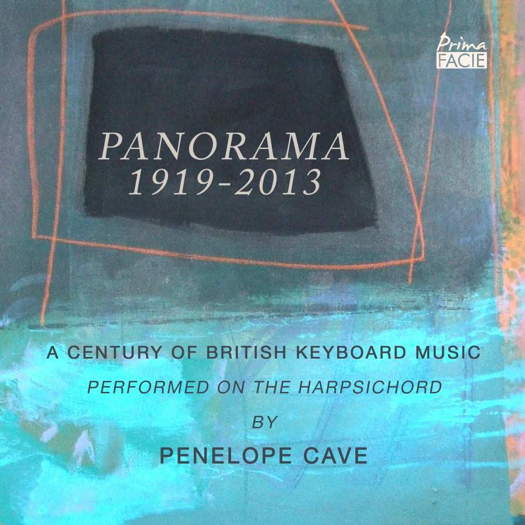 SPONSORED: CD Spotlight. A Fantastic Collection. Penelope Cave Panorama CD. Little-known harpsichord gems, strongly recommended by Alice McVeigh.
SPONSORED: CD Spotlight. A Fantastic Collection. Penelope Cave Panorama CD. Little-known harpsichord gems, strongly recommended by Alice McVeigh.
All sponsored features >>
 DISCUSSION: What is a work? John Dante Prevedini leads a discussion about The performing artist as co-creator, including contributions from Halida Dinova, Yekaterina Lebedeva, Béla Hartmann, David Arditti and Stephen Francis Vasta.
DISCUSSION: What is a work? John Dante Prevedini leads a discussion about The performing artist as co-creator, including contributions from Halida Dinova, Yekaterina Lebedeva, Béla Hartmann, David Arditti and Stephen Francis Vasta.
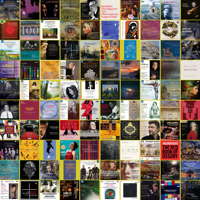 UPDATES: There's a new feature every day at Classical Music Daily. Read about the various ways we can keep in touch with you about what's happening here.
UPDATES: There's a new feature every day at Classical Music Daily. Read about the various ways we can keep in touch with you about what's happening here.
Mariotti and The Ninth
GIUSEPPE PENNISI reviews Michele Mariotti's January 2021 Beethoven performance in Parma
Live performances of Ludwig van Beethoven's Ninth Symphony have been reviewed several times in this magazine, most recently on 30 July 2020 at the end of the entire cycle of the composer's symphonies conducted by Antonio Pappano with the ensemble of the Accademia Nazionale di Santa Cecilia in the Cavea del Parco della Musica in Rome. That review compared different performances of the symphony over the last thirty years. I refer to that review for an analysis of the composition as well as of the approaches of some of the main conductors. [Read 'Pappano's Ninth' - 30 July 2020]
At the opening of 2021 as well as of the new opera, ballet and concert season on 12 January, Parma's Teatro Regio proposed Beethoven's Ninth. Michele Mariotti conducted the Arturo Toscanini Philharmonic Orchestra and the Regio Chorus, prepared by Martino Faggiani, as well as a splendid quartet of voices composed by Christiane Karg, soprano, Veta Pilipenko, mezzo-soprano, Francesco Demuro, tenor and Michele Pertusi, bass.
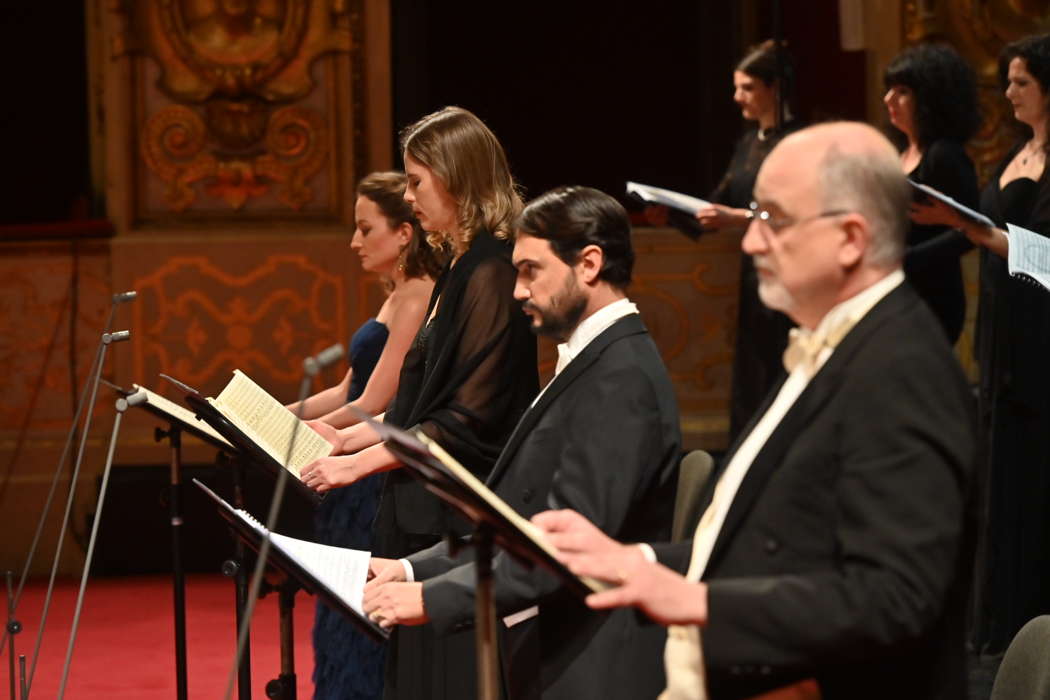
The soloists at the 12 January 2021 concert in Parma. Photo © 2021 Roberto Ricci
The performance was broadcast live on 12 Parma TV and live streamed for a fee on the Facebook page of the Teatro Regio; the symbolic price was € 1.09. It was the Teatro Regio's homage to Beethoven at the end of the 250th anniversary year of the composer's birth, to the citizens of Parma and to all those who would not be able to reach the city, on the eve of the day of the patron saint, Sant'Ilario, the date of the usual opening of the opera season.
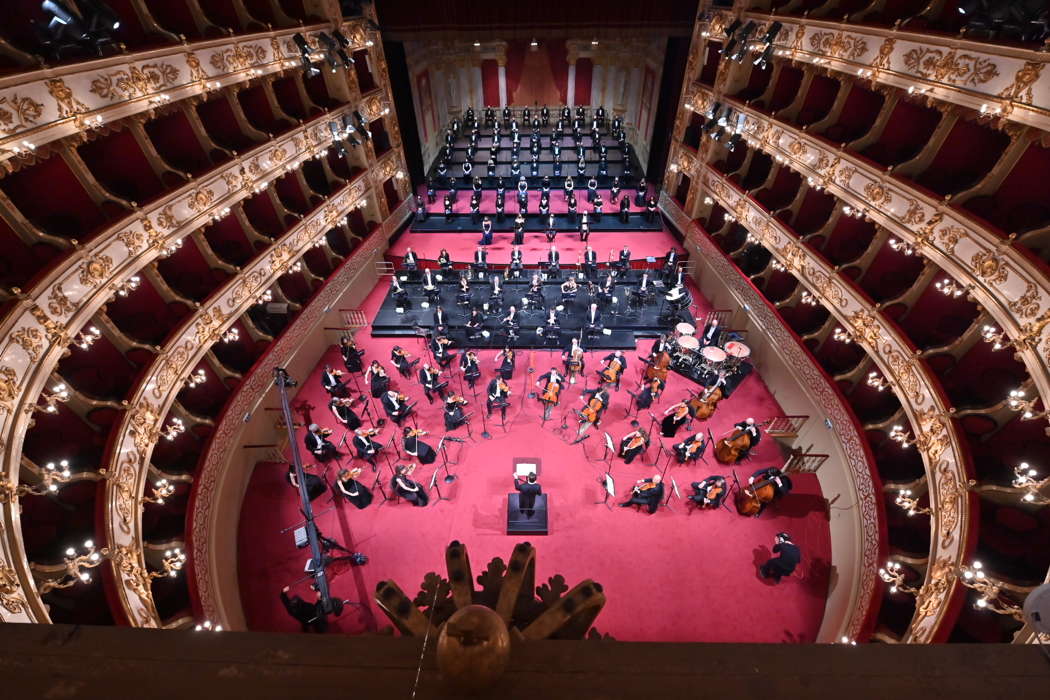
A scene from the 12 January 2021 concert in Parma. Photo © 2021 Roberto Ricci
The set was the trompe-l'œil scenography of the acoustic chamber decorated by Giuseppe Carmignani (Parma, 1807-1852), an original historical theatre structure made with hemp panels mounted on wooden frames. The orchestra was in the parterre, close to the stage, on which there were the chorus members, spaced according to the protocol on health safety currently in force. The performance of the recitative 'O Freunde, nicht diese Töne' and the chorus 'Freude, schöner Götterfunken', in the fourth movement of the symphony, was accompanied by the scrolling of subtitles with the translation of Friedrich Schiller's original text.
As is well known, the symphony testifies fully the intellectual power then held by Beethoven. In technical terms, the development of its symphonic form is the projection of the principles underlying the sonata style on the scale of the total work in four movements, rather than that of a single movement typical of sonata form. Beethoven demonstrated the expressive capacity and the radical intent of this work, which distinguishes it from symphonies in the eighteenth-century tradition. In the best spirit of early Romanticism, Beethoven sought a new strong human contact through the simplicity of the song, without sophistication or artifice. His tones, which are pleasant and joyful, together with his invocation to unity, sharing as well as brotherhood, are among the reasons for this symphony's last movement An die Freude (To Joy) theme being chosen in 1972 as the Council of Europe's anthem and in 1985 as the European Union anthem.
The main feature of the performance was the breath given by Michele Mariotti to the symphony. I would like to see him conduct in Italy more often, even though now he is an international star. With him on the podium, Beethoven's Ninth becomes, at the same time, a great nineteenth-century melodrama and a great anthem to brotherhood, freedom and the right to pursuit of happiness for every individual, as stated in the American Constitution. It is a very personal and fascinating approach. It demonstrates the universal and timeless value of the Ninth and at the same time its roots in the then nascent Romanticism. Mariotti directs with broad arms and with a great intensity. This can be clearly seen from the television (and streaming) close-ups.
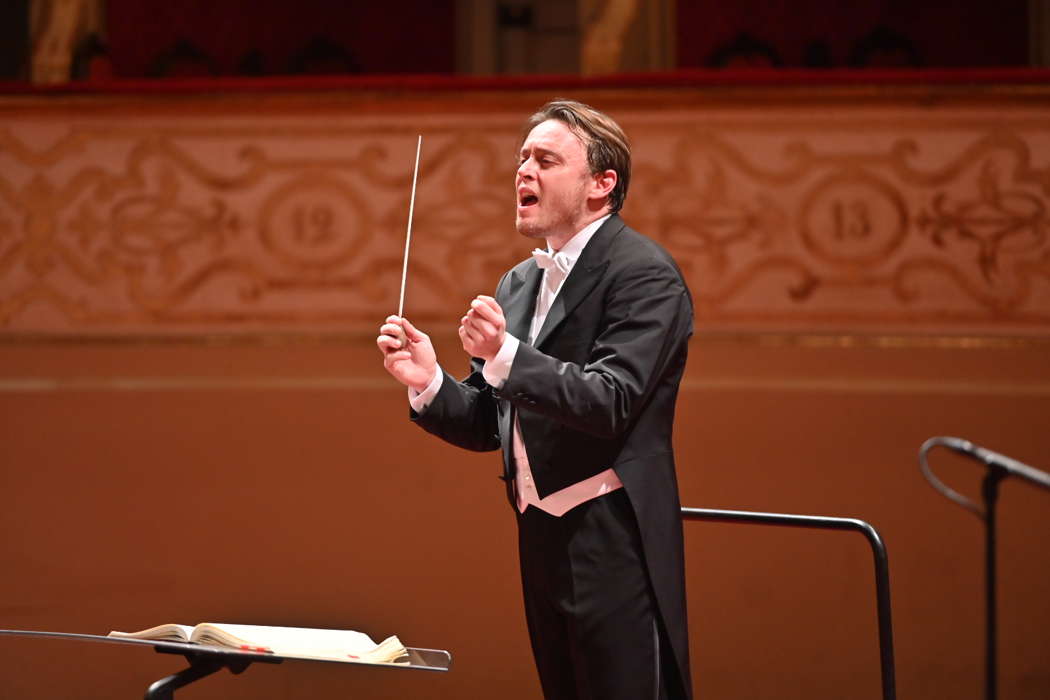
Michele Mariotti conducting at the 12 January 2021 concert in Parma. Photo © 2021 Roberto Ricci
He gives the attacks to the voices (all of great level) and to the chorus and underlines the difference between the first three movements (read as filtered from Beethoven's memory of his previous symphonies) and the fourth. A memory all the more necessary as Beethoven prepared to launch himself, in the fourth movement, into hitherto unexplored terrain. I felt this since the first musical chord. The first movement, Allegro ma non troppo maestoso, is read almost like a sea storm, and the second, Molto vivace, as a moment of sunny happiness. The third, Adagio molto e cantabile, is languid and passionate. Joy explodes in the last movement's Schillerian poem when the chorus and soloists merge their voices with the orchestra.
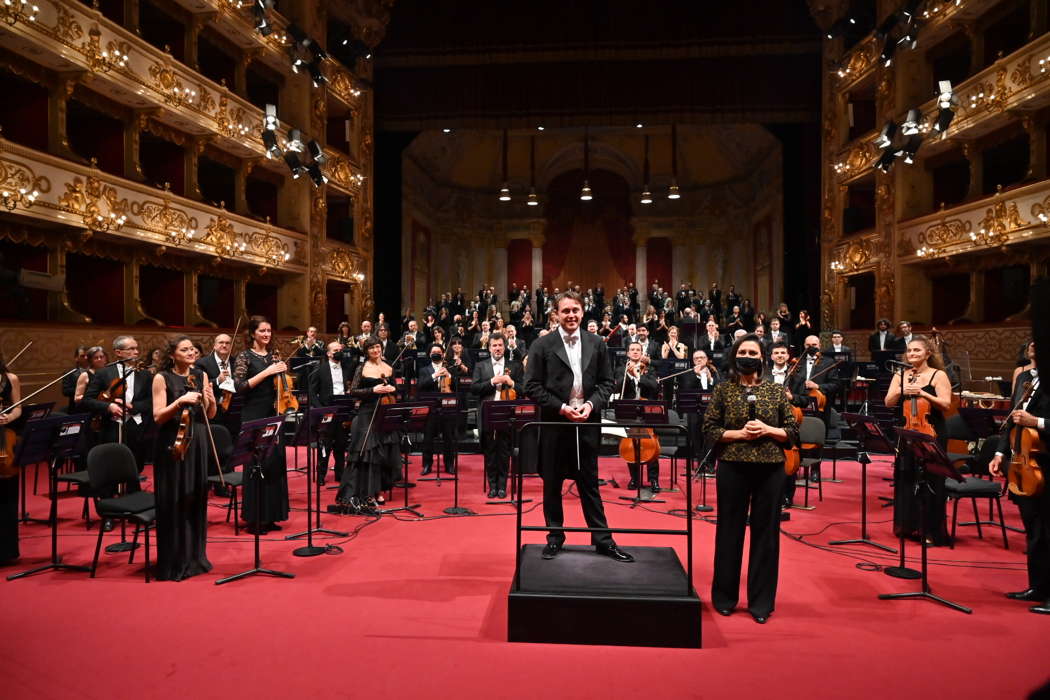
Immediately after the 12 January 2021 concert in Parma. Photo © 2021 Roberto Ricci
I would like to close this review by sharing a personal recollection with readers. I had listened to Mariotti, as a very young man, conducting Rossini's Il barbiere di Siviglia in smaller theatres. I went to his debut in 2007 as Music Director of the Teatro Comunale di Bologna. The inaugural opera was Verdi's Simon Boccanegra. The then twenty-eight-year-old Mariotti was praised by all the press except me; I expressed mixed feelings about the soundness of entrusting to a young person the most complex, and in some respects most autobiographical work of Verdi, who felt elderly and reflected on his own life.
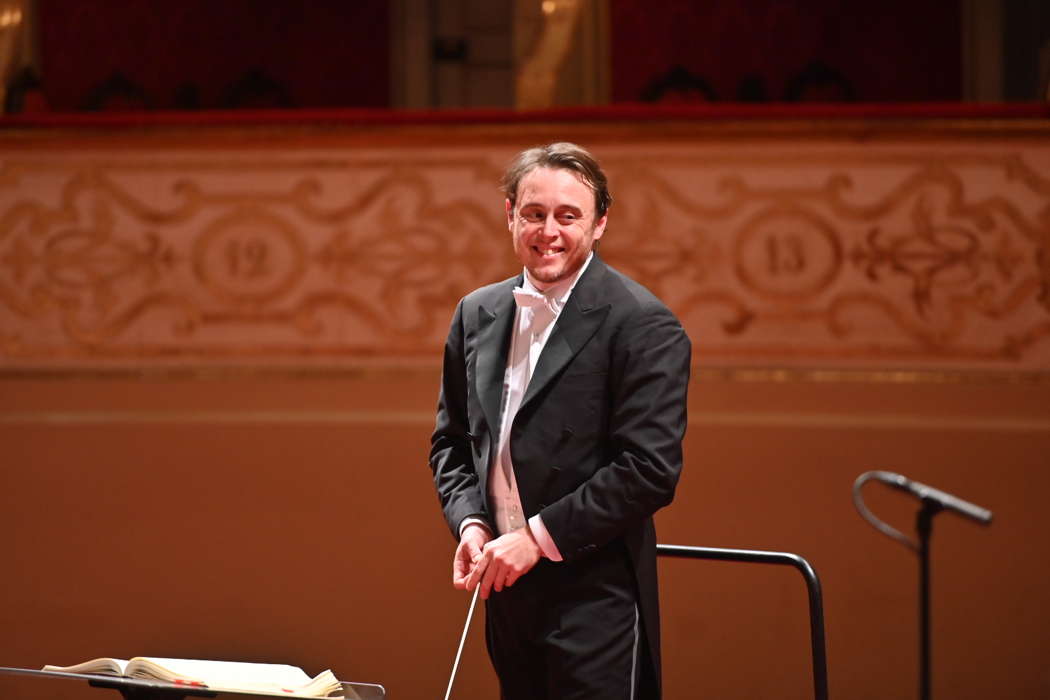
Michele Mariotti at the end of the 12 January 2021 concert in Parma. Photo © 2021 Roberto Ricci
I then listened to Mariotti at the Rossini Opera Festival several times: he was simply splendid. In Pesaro, we often saw each other at the after opera dinners organized by Silvana Ratti, a business woman who has always been a patron of the Festival. There it was difficult to speak privately. In 2011, I went to Modena where Mariotti debuted in an opera that was both stunning and very difficult: Il Prigioniero by Dallapicolla. I loved the performance and I went to greet him in the dressing room. As soon as he got out of the shower, he said to me 'you are the only one who wrote of my debut in Bologna what I myself thought: I was not conducting that Simon Boccanegra well and I knew it!'. A great conductor and a great man.
Copyright © 16 January 2021
Giuseppe Pennisi,
Rome, Italy

FURTHER CLASSICAL MUSIC ARTICLES ABOUT PARMA
FURTHER LIVE CONCERT AND OPERA REVIEWS


